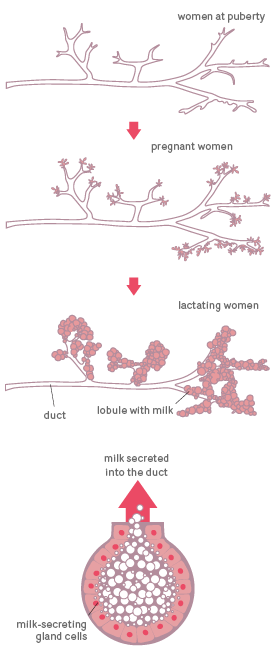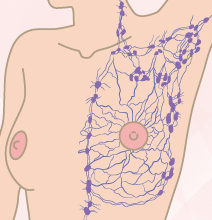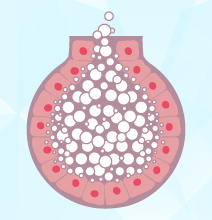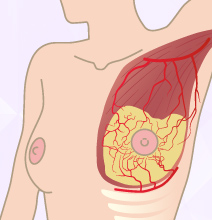Hormonal fluctuations
The development of the female breast is controlled by hormonal fluctuations.

In the womb, maternal hormones trigger the development of the first, still rudimentary, breast structures.
From puberty, and during each menstrual cycle, the levels of estrogen and progesterone will shape the unique characteristics of the female breast. Every month female breast swells with fluids and the mammary gland matures ready to breastfeed if necessary.
During pregnancy, the hormones prolactin and oxytocin induce further maturation of the breast, making the mammary gland ready to produce milk.
Only at menopause do these hormonal fluctuations decrease. As the level of estrogen goes down, the mammary gland atrophies.
After the menopause, the risk of breast cancer becomes much higher. The hormonal environment endured by breast tissues throughout life also increases their cancer risk at older age.
The use of hormonal supplements as hormonal replacement therapies can also influence the risk of breast cancer.




